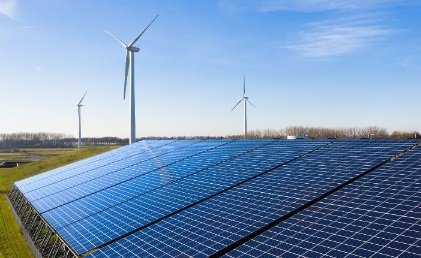In 2023, the world achieved an unprecedented milestone in solar energy, adding a record 347 gigawatts (GW) of solar power capacity—marking a 74% surge compared to the previous year. This remarkable growth, driven by falling solar panel costs and favorable government policies, demonstrates the growing momentum of the global shift toward renewable energy. According to a report by the International Renewable Energy Agency (IRENA) and the International Labour Organization (ILO), the solar sector has emerged as a key player in the transition to cleaner energy.
Key Contributors to Solar Growth
China led the charge in this solar boom, accounting for a staggering 63% of the newly installed capacity. The country added 216.9 GW of solar power, further cementing its position as the global leader in renewable energy. Other major contributors included the United States, Germany, Brazil, India, Spain, Italy, the Netherlands, Japan, and Australia, which collectively added 83.4 GW of solar capacity.
Europe also played a significant role, with a 54 GW increase in solar energy capacity across the continent. In the United States, solar capacity rose by approximately 25 GW, demonstrating the country’s growing commitment to clean energy and its potential to further expand renewable power generation.
Employment Growth in the Solar Sector
The rapid expansion of solar energy in 2023 also led to a sharp increase in employment within the solar photovoltaic (PV) sector. Global employment in the industry grew to 7.1 million jobs, up from 4.9 million in 2022. China once again led the way, providing 4.6 million of these jobs, underscoring its dominant role in both solar production and deployment.
Europe employed around 757,500 people in the solar sector, primarily in the European Union. India contributed 318,600 jobs, while the United States and Brazil added 280,000 and 264,000 jobs, respectively. This surge in employment highlights the potential of the solar industry to drive economic growth and job creation while contributing to a sustainable energy future.
The Role of Decentralized Renewable Energy (DRE)
Decentralized renewable energy (DRE) technologies, which bring clean energy to remote and underserved areas, also saw significant growth in 2023. Countries like India, Kenya, Nigeria, Uganda, and Ethiopia created approximately 307,000 jobs through DRE technologies. While the full scope of employment data in this area remains limited, the expansion of DRE is crucial for improving energy access and enhancing sustainability in rural regions.
Policy Recommendations for Sustained Growth
The IRENA and ILO report emphasizes the importance of continued policy support to maintain the momentum in solar energy growth. Comprehensive policies are needed to create environmentally, economically, and socially sustainable energy systems. Collaboration between public, private, and civil society organizations is essential to ensure a fair energy transition that not only embraces new technologies but also creates good jobs and fosters community involvement.
The report also stresses that governments should focus on creating an inclusive energy transition. This involves not only encouraging technological innovation but also ensuring that communities are actively engaged in the shift to renewable energy. By doing so, the transition can deliver widespread benefits, from economic growth to environmental protection.
A Bright Future for Solar Energy
The solar energy sector witnessed unprecedented growth in 2023, with record capacity additions and substantial job creation worldwide. This progress underscores the vital role of strong policies and international collaboration in building a sustainable energy future. As countries continue to invest in renewable energy and improve energy access, solar power is poised to become a cornerstone of the global energy system, driving both economic and environmental benefits for years to come.


